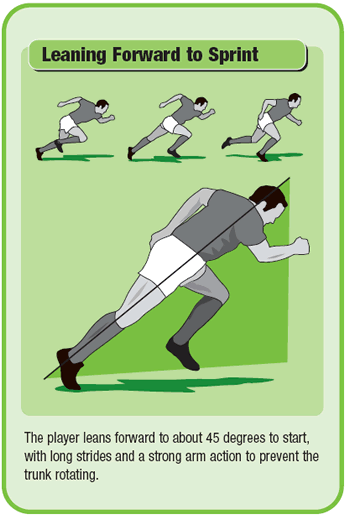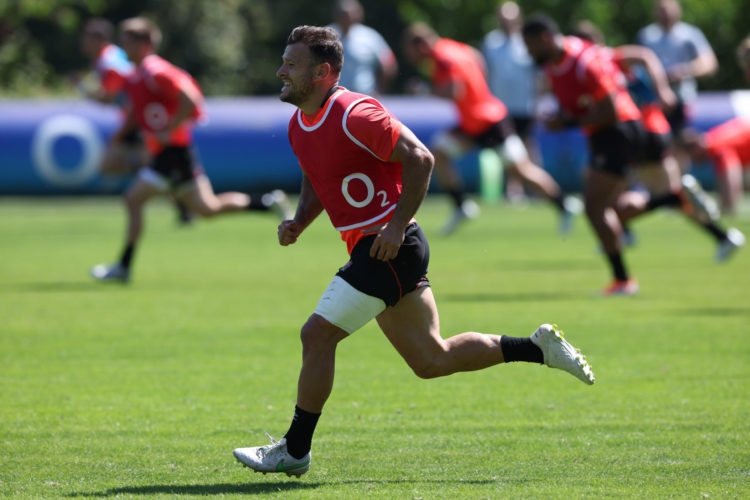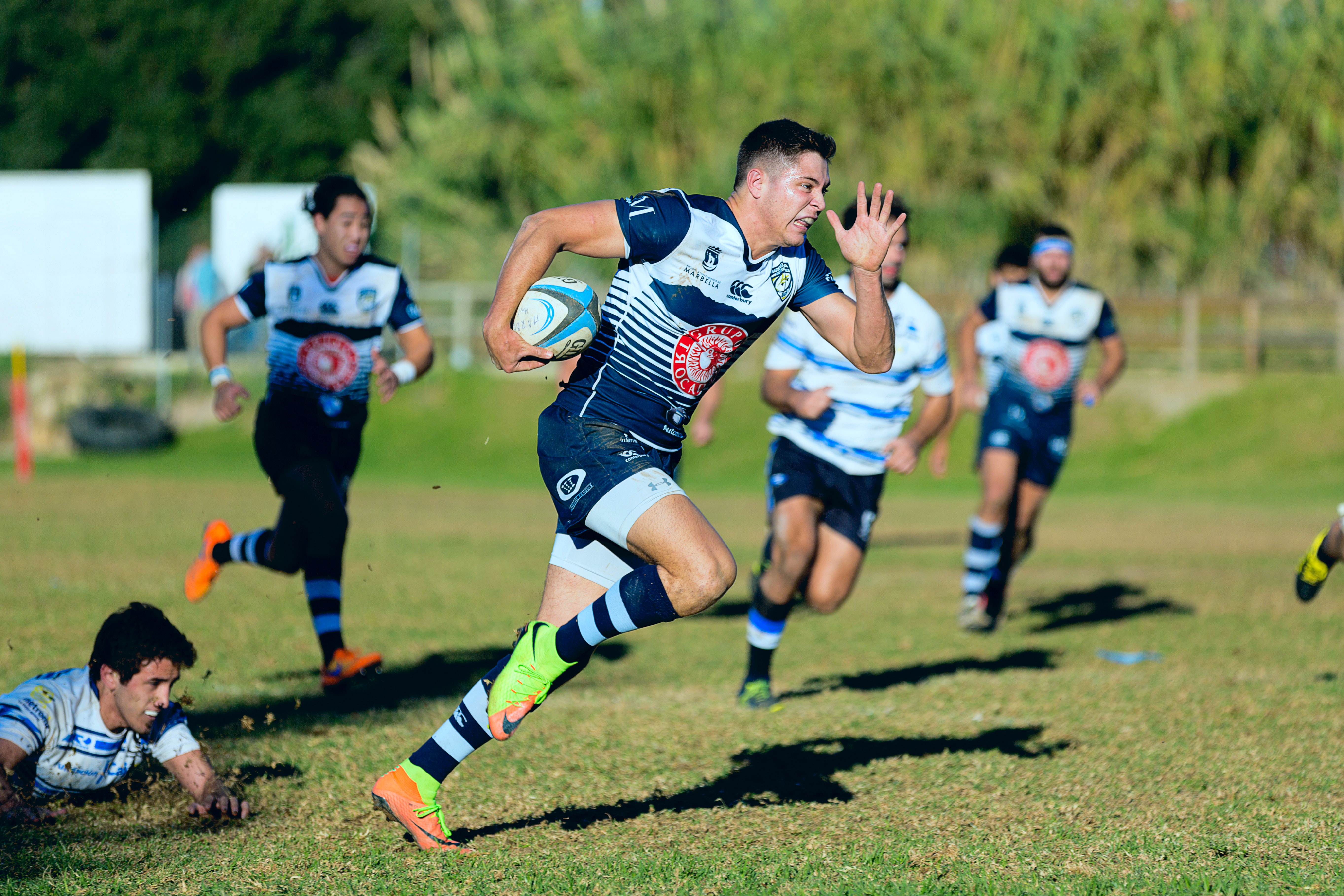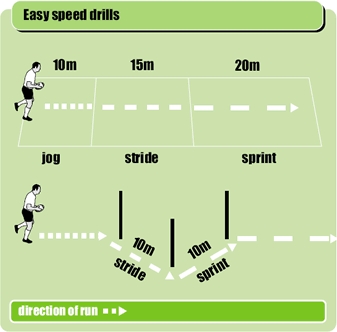Are you looking to enhance your rugby players' acceleration on the field? In this blog, we will explore various sprint training drills that are specifically targeted towards improving acceleration in rugby players. These drills are designed to enhance speed, explosiveness, and agility, giving your players the edge they need to outrun their opponents. So, grab your stopwatch and get ready to transform your team into lightning-fast rugby stars!
Maximize Your Rugby Players' Acceleration with Sprint Training Drills
As a rugby coach, you understand the importance of speed and acceleration on the field. Whether it's beating an opponent to the try line or making a vital tackle, your players need to be able to quickly accelerate and chase down their targets. That's why incorporating sprint training drills into your practice sessions is essential. In this article, we'll take a comprehensive look at various sprint training drills that will help maximize your rugby players' acceleration.

1. Warm-Up Drills
Before diving into the intense sprint training, it's crucial to warm up your players' bodies properly. Warm-up drills prepare their muscles for the upcoming workout and reduce the risk of injuries. Here are three warm-up drills you can incorporate:
1.1 Dynamic Stretching
Dynamic stretching involves active movements that mimic the actions performed during the game. Encourage your players to perform exercises like leg swings, arm circles, and walking lunges. These stretches improve flexibility, increase blood flow, and prepare the muscles for explosive movements.
1.2 Jogging and Dynamic Movements
Incorporate light jogging and dynamic movements like high knees, butt kicks, and side shuffles into your warm-up routine. This helps elevate heart rate and body temperature, activating the neuromuscular system. It also primes the body for more intense sprinting activities.
1.3 Agility Ladder Drills
Utilize agility ladder drills to focus on footwork and coordination. Have your players perform exercises like single leg hops, lateral shuffles, and rapid feet drills. These drills improve agility, quickness, and overall body control.
2. Acceleration Technique Drills
Now that your players are warmed up, it's time to focus on developing their acceleration technique. These drills will help them explode off the mark and gain an advantage over their opponents.
2.1 Drive Phase Starts
Teach your players proper drive phase starts to maximize their power output. Emphasize the importance of explosively driving their arms and knees forward while maintaining a strong body posture. This drill enables them to generate maximum force during the initial stages of a sprint.
2.2 Resisted Sprints
Incorporating resisted sprints, such as sled pulls or harness sprints, improves acceleration by increasing muscle strength. By adding resistance to their sprint, your players will develop more power and speed when the resistance is eliminated. Start with lightweight resistance and gradually increase it as their strength improves.
2.3 Hill Sprints
Hill sprints are an excellent way to develop explosive acceleration and power. Find a hill with a moderate incline and instruct your players to sprint up the hill at maximum effort. This drill not only strengthens the lower body muscles but also improves stride length and technique.

3. Plyometric Drills
Plyometric drills enhance power, speed, and explosiveness, making them beneficial for rugby players aiming to improve their acceleration. Incorporate the following plyometric exercises into your training sessions:
3.1 Box Jumps
Box jumps focus on developing lower body power and explosiveness. Instruct your players to jump onto a box or platform, landing with a stable and controlled position. Start with a lower height and gradually progress as their strength improves.
3.2 Broad Jumps
Broad jumps target explosive power in the hips and legs. Have your players start with their feet shoulder-width apart, then explode forward as far as possible, landing in a stable position. This exercise improves not only acceleration but also agility and coordination.
3.3 Depth Jumps
Depth jumps help develop speed and power by quickly transitioning from an eccentric to a concentric muscle contraction. Instruct your players to step off a box, land, and immediately explode upward. This drill mimics forceful movements in the game, contributing to improved acceleration.
4. Power Development Drills
Power is a crucial component of acceleration and is necessary for explosive movements on the rugby field. Implement the following power development drills:
4.1 Medicine Ball Throws
Medicine ball throws engage the entire body, specifically targeting the core, upper body, and shoulders. Have your players perform exercises like overhead throws, rotational throws, and chest passes. These drills not only develop power but also promote coordination and stability.
4.2 Weighted Sled Pushes
Similar to resisted sprints, weighted sled pushes increase lower body strength and power. Instruct your players to push against a sled loaded with weights to stimulate explosive force production. This drill translates into more effective acceleration and increased muscle power.
4.3 Squat Jumps
Squat jumps are a compound exercise that combines a squat and a vertical jump. Have your players squat down, then explode upward, reaching for maximum height. This drill improves lower body power and explosiveness, directly benefiting acceleration.

5. Resistance Training Drills
Incorporating resistance training into your players' routine helps improve strength, power, and overall performance. Consider the following drills:
5.1 Deadlifts
Deadlifts are a compound exercise that engages multiple muscle groups, including the lower back, hips, and legs. Encourage your players to perform deadlifts with proper form and technique, gradually increasing the weight as their strength progresses. This exercise enhances lower body strength, which is essential for explosive acceleration.
5.2 Squats
Squats target the quadriceps, hamstrings, glutes, and other lower body muscles. Instruct your players to perform squats using a barbell or bodyweight, focusing on maintaining proper form throughout the movement. Squats improve leg strength, power, and stability, contributing to increased acceleration.
5.3 Lunges
Lunges are an effective lower body exercise that targets the quads, hamstrings, and glutes. Encourage your players to perform walking lunges, reverse lunges, or stationary lunges with dumbbells or bodyweight. This exercise enhances lower body strength, stability, and balance, which directly impacts acceleration.
6. Interval Training Drills
Interval training combines periods of high-intensity exercise with active recovery. Implement the following interval training drills to improve cardiovascular fitness and overall speed:
6.1 Shuttle Runs
Shuttle runs involve sprinting back and forth between two points, focusing on quick acceleration and change of direction. Set up cones or markers at various distances to create different shuttle run lengths. This drill simulates game scenarios where players need to accelerate rapidly in small spaces.
6.2 Fartlek Training
Fartlek training incorporates varied intensities and distances to simulate game-like conditions. Instruct your players to vary their speed and intensity throughout their runs, alternating between sprints and jogs. This type of training improves aerobic and anaerobic fitness, allowing players to enhance their acceleration and overall endurance.
6.3 High-Intensity Interval Training
High-intensity interval training (HIIT) involves short, intense bursts of exercise followed by brief recovery periods. Incorporate exercises like sprints, burpees, or squat jumps, with rest intervals in between. HIIT improves cardiovascular capacity, muscular endurance, and anaerobic power, directly impacting acceleration.

7. Focusing on Starts
Starts are crucial in rugby, and effectively accelerating from a stationary position can give your players a significant advantage. Implement the following drills to enhance their start performance:
7.1 Reaction Drills
Reaction drills focus on developing quick reflexes and explosive movements off the mark. Utilize various cueing methods, such as verbal commands or whistle blows, to simulate game scenarios. Encourage your players to react and sprint from a stationary position as quickly as possible.
7.2 Electronic Timing Systems
Invest in electronic timing systems to accurately measure your players' start times. This provides them with real-time feedback, enabling them to identify areas for improvement and track their progress. Electronic timing systems boost motivation and competitiveness among players, pushing them to achieve faster acceleration times.
7.3 Command Starts
Command starts replicate game situations where players need to respond to a specific command to initiate a sprint. Use verbal cues like "go" or "set, go" to trigger your players' acceleration. This drill improves their reaction time and ensures they are ready to explode off the mark when required.
8. Incorporating Change of Direction
Rugby demands quick changes in direction, making it important to incorporate drills that focus on agility and lateral movement. Utilize the following drills to enhance your players' change of direction capabilities:
8.1 Zig-Zag Sprints
Zig-zag sprints require players to rapidly change direction while sprinting through a series of cones or markers. Set up a pattern that forces your players to make quick lateral movements and accelerate explosively in a new direction. This drill improves agility, speed, and acceleration while changing directions.
8.2 T-Drills
T-drills involve sprinting forward, laterally, and backward to enhance agility, coordination, and change of direction. Set up cones in the shape of a T, with your players starting at the base and performing various movements around the cones. This drill replicates game scenarios where players need to quickly change direction while running.
8.3 Lateral Bounds
Lateral bounds are plyometric exercises that improve lateral power and quickness. Instruct your players to perform consecutive side leaps, bounding sideways explosively. This exercise develops the muscles involved in lateral movement, enhancing acceleration during change of direction.

9. Sprint Endurance Drills
In rugby, maintaining a high level of acceleration throughout an entire match is essential. Incorporate the following sprint endurance drills to improve your players' ability to sustain their speed:
9.1 Tempo Runs
Tempo runs involve running at a submaximal, but challenging pace, for extended distances. Instruct your players to maintain a consistent speed for a set distance, focusing on proper running form and technique. Tempo runs improve aerobic capacity and muscular endurance, allowing players to sustain their acceleration throughout the game.
9.2 Circuit Training
Circuit training combines various exercises to improve overall fitness and endurance. Create a circuit that includes sprinting intervals, bodyweight exercises, and agility drills. This type of training enhances cardiovascular fitness, muscular endurance, and the ability to maintain acceleration during the game.
9.3 Metabolic Conditioning
Metabolic conditioning involves high-intensity exercises performed in quick succession with minimal rest periods. Combine exercises like sprints, burpees, or kettlebell swings into a challenging circuit. Metabolic conditioning enhances anaerobic fitness, muscular endurance, and overall speed endurance.
10. Mental Conditioning for Acceleration
Acceleration isn't solely dependent on physical abilities; the mental aspect plays a crucial role as well. Help your players develop mental conditioning strategies to enhance their acceleration:
10.1 Visualization
Encourage your players to visualize successful acceleration and explosive starts in their minds. Visualization techniques help improve focus, build confidence, and enhance overall performance. Instruct them to imagine themselves explosively accelerating off the mark and achieving their desired outcome.
10.2 Positive Self-Talk
Promote positive self-talk among your players to enhance their confidence and mental preparation. Teach them to use affirmations and positive statements to reinforce their belief in their acceleration abilities. Positive self-talk can boost motivation and help players overcome doubts or negative thoughts during critical moments.
10.3 Goal Setting
Guide your players in setting specific goals related to acceleration and sprint performance. Encourage them to set both short-term and long-term goals, focusing on areas they need to improve. Goal setting provides direction and motivation, allowing players to work towards achieving their desired acceleration outcomes.
By incorporating these comprehensive sprint training drills into your rugby practice sessions, you can maximize your players' acceleration and give them a competitive edge on the field. Remember to prioritize proper warm-up, technique, and mental conditioning to ensure optimal results. With consistent training and dedication, your rugby players will be able to accelerate faster and perform at their best when it matters most.
